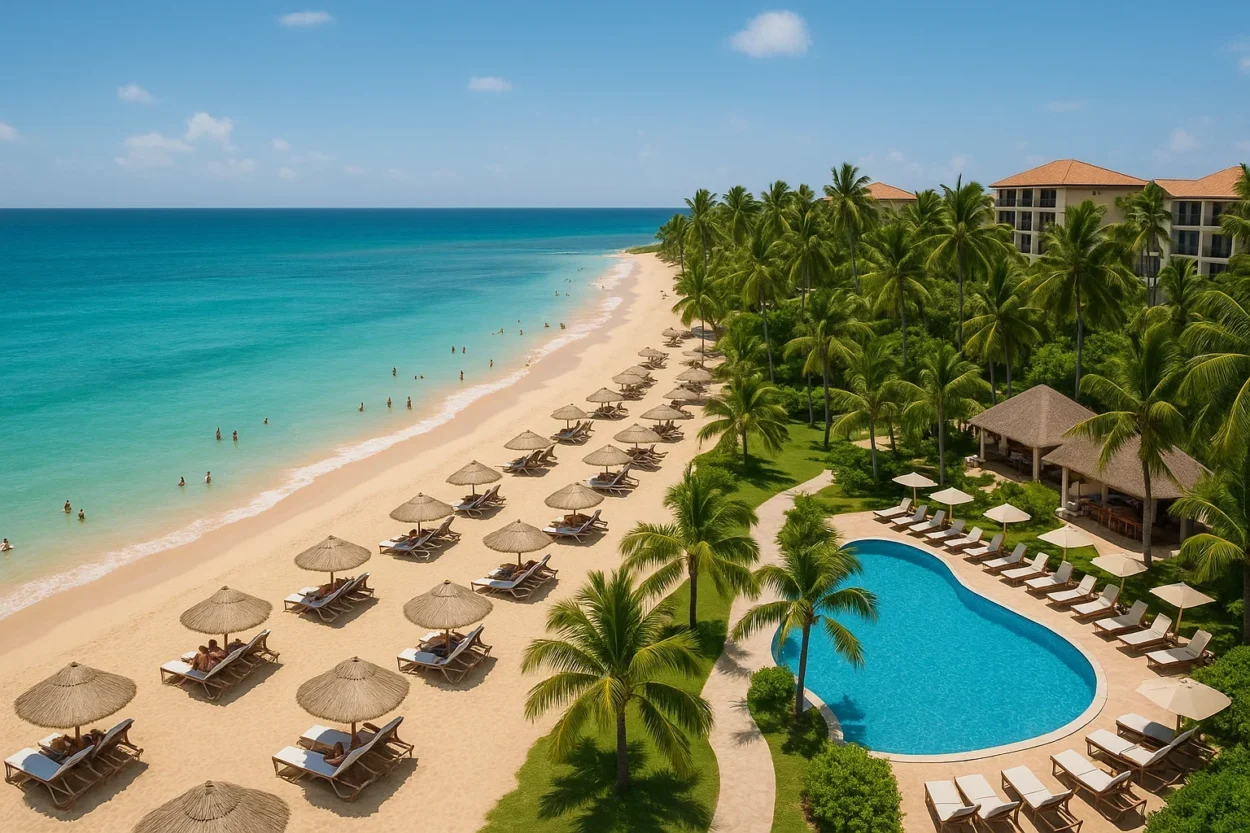Introduction: Why Visit the Philippines?
The Philippines, an island chain with over 7,000 components, is a tropical paradise filled with the wonders of nature, rich culture, and warm hospitality. With white sandy beaches, crystal-clear waters, and verdant surroundings, the Philippines offers everything from urban discoveries to isolated island escapes.
There is something for everyone in this Southeastern gem, ranging from foodies and history buffs to beachgoers and thrill seekers. Here is your definitive travel guide to the Philippines’ prime destinations.
Boracay: The White Beach Wonder
Boracay is the Philippines’ most famous destination. The island of Aklan Province is famous for its white powdery sand, crystal-clear turquoise waters, and lively night life.
White Beach: 4-kilometer long beach for sunbathing, swimming, and watching the sunsets.
Puka Shell Beach: Less crowded and ideal to unwind.
Willy’s Rock: Photographers’ haven and scenic grotto
Activities: Island-hopping, paddleboarding, kite surfing and parasailing at Bulabog Beach
Palawan: The Last Frontier
Referred to as the most gorgeous islands on the planet, Palawan is a heaven for outdoor adventurers and scuba divers.
El Nido: Famous for its limestone cliffs, lagoon tours, and secluded beaches.
Coron: Renowned for WW II wreck diving, coral gardens and lakes such as Kayangan and Barracuda.
Puerto Princes: Home to the Underground River, the New 7 Wonder of Nature.
Why Visit: Palawan has breathtaking seascapes and ecotours without the crowds.
Manila: The Urban Gateway
Manila, the capital city, is generally only a transit point but is worth visiting for its historical sites, shopping centers, and vibrant street foods.
Intramuros: A Spanish-era walled city with Fort Santiago and the San Agustin Church.
Rizal Park and National Museum Complex: The ultimate place to catch up on Filipino history and culture.
Bonifacio Global City (BGC): A modern-day commercial hub featuring art galleries, pubs, and international eateries.
Pro Tip: Stay overnight or more in Manila before heading to the islands—it’s hectic but has character.
Banaue and Sagada: Mountain Escapes
Travel north to the Cordillera Region for a break from the usual, and explore the cooler, hilly terrain of the Philippines.
Banaue Rice Terraces: Dubbed the “Eighth Wonder of the World,” the Ifugao terraces were hand-carved by the Ifugao people more than 2,000 years ago.
Sagada: A tranquil town renowned for its famous hanging coffins, spelunking caves, and panoramic hikes.
Best Time to Visit: Between November and May (dry season hiking)
Cebu: Where History Meets Island Life
The best of both worlds are offered by Cebu—historic sites and gorgeous islands. Visit Magellan’s Cross, Basilica Minore del Santo Niño, and Fort San Pedro.
Island Hopping: From Malapascua where thresher sharks are renowned to Moalboal where sardines school, the underwater life is unforgettable.
Kawasan Falls: A multi-pitch cascade suitable for swimming and canyoneering.
Tip: Try the lechon (roasted pig)-the most famous dish
Bohol: Nature and Heritage Combined
A ferry ride from Cebu, Bohol is famous for its chocolate-hued hills, tarsiers, and unspoiled beaches.
Top Spots:
Chocolate Hills: More than 1,000 grass-covered hills become brown during the dry season
Tarsier Sanctuary: Where the smallest primate species live.
Panglao Island: Stunning beaches and superb dive spots.
Activities: River cruises, ATV tours, and cultural tours to the historic Spanish churches.
Siargao: The Surfing Capital
It is also the haven of surfers and digital nomads. No longer is it a secret destination anymore, it now features among the most visited places in the Philippines.
Cloud 9: An international-class wave break where international-level competitors surf.
Sugba Lagoon, Magpupungko Rock Pools, and Naked Island all have great photo opportunities and things to do.
Vibe: Laid back, eco-conscious, and boho with yoga studios and beachside cafes.
Best Time to Surf: September to November
Davao and Samal Island: Southern Comfort
Davao City is the biggest urban hub of Mindanao and is renowned for being safe, clean, and multicultural.
Mount Apo: The highest peak of the Philippines, ideal for climbing.
Philippine Eagle Center and Eden Nature Park offer attractions for families.
Samal Island: Palm-lined white sandy shores and resorts pepper the island, 30 minutes off the mainland via boat.
Travel tips for visiting the Philippines
Best Time to Visit: Dry season: November to May (ideal for beaches and island hopping)
Visa: Most countries get a 30-day visa-free entry; extendable.
Currency: Philippine Peso (PHP)
Transportation: Domestic flights are efficient; jeepneys, tricycles, and buses serve local travel. Ferries connect many islands.
Languages: Filipino and English are both official languages, making it easy for tourists to communicate.
Final Thoughts: Why the Philippines Should Be on Your Bucket List
The Philippines offers a mix of untouched beauty, warm people, and affordable luxury. Whether you’re diving in coral gardens, climbing volcanoes, dancing in street festivals, or simply enjoying a mango shake on the beach, every experience is enhanced by the Filipino people’s legendary hospitality and resilience.
From sunrise treks in the mountains to sunset cocktails by the sea, Philippine tourism offers moments that will stay with you for a lifetime. Come for the beaches, stay for the culture—and leave with a heart full of joy.

